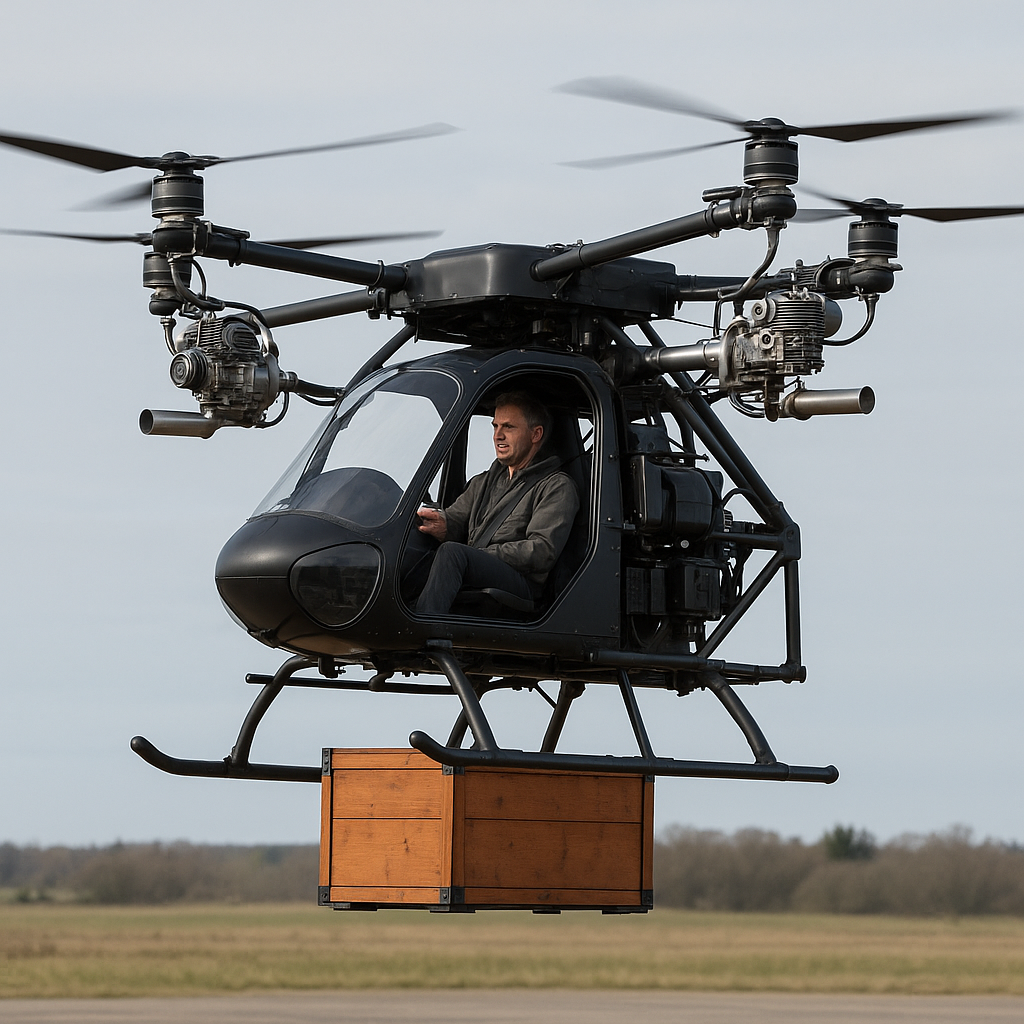How to Actually Build a Gasoline-Powered Quadcopter (From Concept to Sky)
How to Actually Build a Gasoline-Powered Quadcopter (From Concept to Sky)
Welcome back to illphated.com, where imagination meets engineering. Today we’re going full mad scientist: how do you actually build that futuristic gasoline-powered military quadcopter from the blueprint?
Let’s break it down from sketch to sky, with real-world tools, tech, and tactics.
🔧 1. FRAME & FUSELAGE
Blueprint inspiration: Angular stealth fuselage with composite armor
Real-world action:
Material: Use carbon fiber sheets or fiberglass for the airframe. These are lightweight, durable, and heat-resistant.
Design Software: Model your frame in Fusion 360 or SolidWorks for precise tolerances and component housing.
Manufacturing: CNC milling or 3D printing (nylon/carbon-infused filament) for frame parts. Reinforce stress points with aluminum standoffs.
🛠 Pro tip: Keep your center of gravity low—gasoline engines and fuel tanks are heavier than brushless motors.
⚙️ 2. GASOLINE ENGINE SYSTEM
Blueprint inspiration: Dual turbine-style engine with quad-exhaust
Real-world action:
Engine Type: Use a single-cylinder 2-stroke gasoline engine or chainsaw/RC helicopter engine (23cc–50cc range).
Rotor Drive: Build a custom belt or gear transmission to power all four rotors from a central drive.
Fuel Tank: Position it centrally with a secure mount to prevent sloshing during high-G maneuvers.
🛢 Pro tip: Use pulse-tuned exhausts to reduce noise and increase thrust.
🌀 3. ROTORS & FLIGHT MECHANICS
Blueprint inspiration: Rotor torque equalization system
Real-world action:
You can’t vary motor speed like electric drones, so variable pitch rotor heads (helicopter-style) are mandatory.
Install collective pitch control on each rotor, controlled by servos and a swashplate assembly.
🔩 Pro tip: Use gyroscopic stabilization with a flight controller like PX4 or Pixhawk, customized for gas-hybrid builds.
🧠 4. ELECTRONICS & CONTROL UNIT
Blueprint inspiration: Encrypted voice command, retinal tracking, AR HUD
Real-world action:
Flight Controller: Pixhawk with ArduPilot firmware
Telemetry: 900MHz long-range radio or 5.8GHz FPV video feed with HUD overlay
Failsafe: GPS lock, return-to-home, and parachute module
Optional: Connect to a Raspberry Pi for voice recognition and AR overlays.
🧠 Pro tip: Use LiFePO4 backup batteries for critical systems in case of engine stall or crash.
🛡️ 5. ARMOR & PAYLOAD
Blueprint inspiration: Adaptive armor skirts, modular weapon bays
Real-world action:
Use carbon-Kevlar hybrid panels for lightweight protection
Payload can include:
FPV cameras with gimbals
Thermal sensors
Paintball/airsoft turrets (for testing, not combat!)
Drop-release mechanisms for delivery or decoy packages
🎯 Pro tip: All modules should be quick-swap with XT60 connectors and magnetic latches.
🧪 6. CAMOUFLAGE & FINISHING TOUCHES
Blueprint inspiration: Active camouflage plating
Real-world action:
Paint the quadcopter in infrared-absorbing matte black
Add heat-resistant stealth tape on exhaust
For a cinematic flair, install RGB underlighting for night ops (or TikToks 😎)
✅ Final Checklist Before First Flight:
Engine test run on bench
Rotor pitch alignment calibration
Balance fuel tank and center of gravity
Flight controller PID tuning
Emergency failsafe checks (kill switch, GPS return)
🚀 Ready to Launch
Building a gasoline-powered quadcopter isn’t easy—it’s a wild fusion of RC aircraft, drone tech, mechanical engineering, and a whole lot of boldness. But it can be done.
This isn’t just a toy. It’s a real, raw demonstration of what happens when future-forward design meets grease-covered garage genius.
Got questions? Want to see a build series?
Drop a comment below or tag @illphated—and let’s take this from blog post to real-world sky beast.
Stay fly,
– Illphated








gtac8t
1n6axh